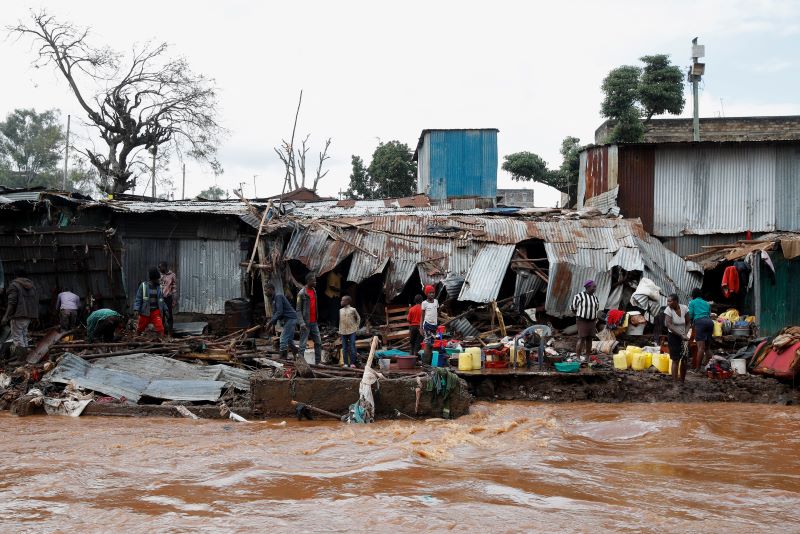Comment: The new UN fund can channel taxes and other innovative ways of raising money to pay for climate loss and damage – we just have to decide to apply them
Avinash Persaud is Special Advisor to the President of the Inter-American Development Bank on Climate Change. Previously he was a member of the negotiation committee to establish the Loss and Damage Fund and an architect of the original ‘Bridgetown Initiative’ on reform of the international financial architecture.
After three decades of negotiations to establish the fund for climate loss and damage, its inaugural board meeting just concluded in Abu Dhabi. The establishment of this fund is a monumental milestone. We are still some way off, but equally historic are seismic shifts underway in how we may finance it.
The first meeting was a modest success. The fourteen members chosen by developing country constituencies and twelve from developed countries demonstrated unity of purpose. Two impressive and committed co-chairs – Jean Christophe Donnellier of France and South African Richard Sherman – were elected. The new board agreed on processes to select an executive director and a host country.
Mistrust eased between some members of the board and the World Bank, which negotiators had previously chosen, with conditions, to be the secretariat of the fund. This unity and commitment are seeds of hope for the fund’s future.
Loss and damage board speeds up work to allow countries direct access to funds
These seeds will need money to grow. The only long-run solution to the escalating climate crisis is accelerating the energy transition from fossil fuels. However, due to the lack of progress, we now face losses and damages that require financing of over $150bn per year – according to the IHLEG Report for COP26 and 27.
These losses disproportionately affect the most vulnerable, exacerbating poverty and inequality. Adding injustice to a bleak situation is that the wealthiest countries are most responsible for the stock of greenhouse gases that cause global warming.
The OECD estimates that total development assistance is $200bn per year, and even though this is half of the commitments made five decades ago, the politics of the day suggest aid money is more likely to be re-channelled for domestic purposes than increased substantially. So where could $100bn plus come from?
Some developed countries promoted the idea that they would initially pay the insurance premiums for a small number of small countries. Twinning insurance to disaster seems natural – especially if you want to minimise using tax-payers money. But with insurers pulling out of California, Louisiana and Florida because of climate risks, those living in other climate-vulnerable countries – 40% of the world’s population – felt this was at best not scalable and at worse disingenuous.
Climate, like a preexisting medical condition, has become uninsurable. It is now a risk of substantial loss that is growing – and increasingly certain, frequent, and correlated – and so insurance’s spreading and pooling qualities don’t work. If the annual known climate loss is $150bn and rising, yearly premiums cannot be much less without direct or cross-subsidies that no one is budgeting. It’s insurance, not magic.
Time to test new taxes
For the climate-vulnerable today, the only real insurance against future loss and damage is investing massively in resilience which would generate future savings several times their cost.
One idea mooted by the Inter-American Development Bank is that the multilateral banks lend for a resilience project in a climate-vulnerable country at little more than the banks’ preferential borrowing rates, and donors separately contribute to a substantial reduction in the interest rate once an independent assessment has certified that the investment has achieved the intended resilience.
Countries can borrow for resilience if the repayment period is sufficiently long to capture the savings, but not for current loss and damage. Without grants to fund that, vulnerable countries will drown in debt long before sea levels rise.
Read More

